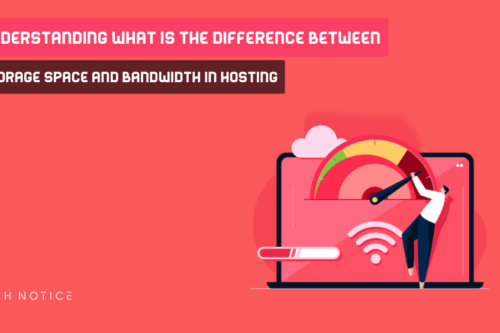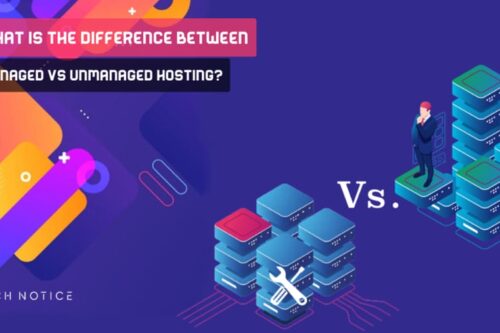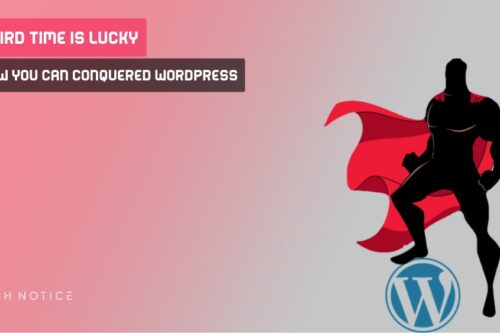Website speed plays an important role in determining the success of yourwebsite, as one of the reasons that Google requires to rank a website in firstin its search engine is site speed and good user experience.
Slow loading websites or poor browsing experience not only frustrates thevisitor but also has a negative impact onsearch engine rankings.
Therefore, it is imperative for website owners to improve the speed andperformance of their sites by following the best SEO tips and optimizeyour website for SEO that provided by web optimization experts.
A critical aspect of this optimization is choosing and properly configuringthe right hosting provider .
In this comprehensive guide, we will explore various strategies and techniquesto improve the speed and performance of your website throughhosting optimization and deciding the best hosting providers ininternet.
What Does it Mean to Optimize a Website?
Website optimization refers to the process of improving performance, speed,user experience, and visibility in search engine results.
This includes implementing various techniques and strategies to ensure thatthe website works efficiently, loads quickly, and provides a smooth and goodvisitor experience.
Website optimization includes several aspects, including:
- Speed improvement
- Mobile optimization
- Improve user experience (UX)
- Search Engine Optimization (SEO)
- Conversion rate optimization (CRO)
- Improved security
Overall, website optimization aims to create a good online experiencethat is fast, easy to use, and engaging.
It involves implementing different techniques, strategies, and best practicesto improve website performance, user satisfaction, and search engines.
Why Is Website Optimization Important?
Website optimization is crucial for several reasons, let’s explore why itmatters:
Offer an enhanced user experience: A well-optimized website provides a smoothand user-friendly experience
Whereby, by optimizing elements such as page speed, smooth navigation, andmobile compatibility, you create a positive user experience that keeps yourvisitors engaged and encourages them to stay exploring more of your website.
Increase Conversion Rates: Optimizing your website can lead to higherconversion rates.
When visitors have an easy and smooth browsing experience, find what they arelooking for easily, and can navigate your website effortlessly, they are morelikely to take required actions, such as making a purchase, filling out aform, or signing up for a newsletter.
Enhanced Search Engine Visibility: Website optimization plays an importantrole in improving the search engine visibility of your site.
By applying SEO techniques such as optimizing meta tags, using relevantkeywords, and creating quality content, you increase the chances of yourwebsite appearing higher in search engine rankings.
Better visibility to search engines means more organic traffic and potentialcustomers finding your website quickly.
Faster loading times: Website speed is a crucial factor in today’s digitallandscape and is a requirement for search engines like google to rank the sitehigher in the first results.
Optimizing your website ensures faster load times, which is vital to usersatisfaction and search engine rankings.
A slow-loading website can lead to higher bounce rates, lower user engagement,and lower conversions.
On the other hand, a fast loading website improves user experience andencourages visitors to stay longer on your site.
A mobile friendly website ensures that users can easily access and navigateyour site on smartphones and tablets.
This improves user experience, encourages mobile visitors to engage with yourcontent, and positively affects your search engine rankings, as search enginesprioritize mobile websites.
Competitive Advantage: An optimized website gives you a competitive edge. Byproviding a good user experience, faster load times, and higher search enginerankings, you set yourself apart from the competition.
A well-optimized website positions your brand as trustworthy, reliable, anduser-oriented, and attracts more visitors and potential customers.
Cost Effectiveness: Optimizing your website can save you costs in the longrun.
By improving website speed and user experience, you reduce the likelihood ofvisitors leaving your site due to frustration or slow loading times.
This translates to a better ROI (Return on Investment) for your marketingefforts and can reduce the need for additional paid advertising to compensatefor a poorly performing website.
Better analytics and insights: Website optimization allows you to gathervaluable data and insights about your website’s performance.
By monitoring user behavior, tracking conversions, and analyzing metrics, youcan identify areas for improvement and make data-driven decisions to enhancethe effectiveness of your website.
How Do I Check The Speed of My Website?
There are many good tools available online that can help you measure the speedand performance of your website.
Some popular tools include Google PageSpeed Insights, GTmetrix , Pingdom ,and WebPageTest .
Simply visit any of these sites and enter your site’s URL to get detailedreports and suggestions for improvement.
Choose the right hosting provider
When it comes to improving website speed and performance, choosing the righthosting provider is the first step.
There are two ways to get a website on the Internet, either by the free methodprovided by the Google Blogger platform , or by the paid method via the WordPress platform that needs hosting.
Keep the following factors in mind when evaluating and choosing and explore types of hostings when you buy:
Server response time: Make sure your hosting provider offers low serverresponse times.
This means that the fast server response time provides the advantage of fasterloading of the site and pages on the site for visitors.
Guaranteed uptime: Look for a hosting provider that offers a high guarantee ofuptime, ideally the best uptime is 99.9% or higher.
Constant downtime can affect the user experience, and lead to missingimportant visitors to your site.
Scalability: As your website grows, you may need to deal with an increase intraffic.
Choose a hosting provider that offers scalability options, allowing you toseamlessly upgrade resources when required.
Integration with a Content Delivery Network (CDN): CDNs help distribute yourwebsite’s content across multiple servers around the world, reducing latencyand improving page load times.
Look for hosting providers that integrate with popular CDNs.
Support and reliability: Choose a hosting provider with a good reputation for customer support and reliability.
In the event of any technical issues, you will need responsive support toaddress them immediately.
Best Techniques to optimize your website for SEO
Once you have choice right hosting provider, it is time to improve yourwebsite speed and performance further.
Let’s explore some proven and effective techniques that deliver good resultsfor your site in terms of speed and performance and for SEO:
1. Optimized your Website Content
Optimizing your website’s internal content can greatly improve its speed andperformance.
Consider optimizing the following functions:
* Image Compression: Large image files can slow down your website whenloading.
So you should compress images without losing quality using a WordPress Plugins like SMUSH – Lazy Load Images, or an image compression websites likecompress-or-die.
* Minify or compress CSS and JavaScript files: compress CSS and JavaScriptfiles removes unnecessary code or characters, reduces file sizes and improvesload times for these files.
* Take advantage of browser caching: Enable browser caching to store staticfiles locally, allowing returning visitors to load your website faster.
* Use Content Delivery Networks (CDNs): CDNs distribute your website contentacross multiple servers, which reduces latency and improves load times forusers around the world.
2. Cache optimization
Caching can greatly improve website speed by storing static content andserving it quickly to users.
Consider the following caching techniques that offer the advantage of fastersite loading for returning visitors:
* Browser caching: Set expiration dates for static resources inthe HTTP headers to instruct the browser to cache them.
This reduces the number of HTTP requests and improves page load times forreturning visitors.
* Server-side caching: Use server-side caching mechanisms, such as opcodecaches or object caches, to store dynamic content in memory and quickly serveit to your visitors.
* CDN Caching: Leverage the caching capabilities of your chosen CDN to storeand serve your website’s static content from multiple sophisticated locationsaround the world.
3. Database optimization
Database queries and operations can affect website performance.
Optimize your database to improve speed and reduce server load:
* Index optimization: Analyze the database schema and create indexes onfrequently queried columns to speed up database lookups.
* Query optimization: Optimize database queries with proper indexing, avoidunnecessary joins, and reduce the use of wildcards.
* Database Cleanup: Regularly clean and optimize your database by removingunnecessary data, optimizing table structures, and implementing efficient datawarehousing practices.
4. Server side optimization
Server-side optimization involves configuring your server to increaseperformance and process requests efficiently:
* Enable GZIP Compression: Enable GZIP compression to reduce the size of yourwebsite files before they are transmitted over the network, this will resultin faster page load times.
* Keep software up-to-date: Ensure that server software, including theoperating system, web server, and scripting languages, is up-to-date.
Updates often include performance and speed improvements and security fixes.
* Enable opcode caching: opcode caching stores the compiled PHP code inmemory, which reduces processing overhead and improves the response time ofPHP-based websites.
5. Site Monitoring and performance testing
Monitor your website’s performance regularly and perform performance testingto identify areas for improvement:
* Use performance monitoring tools: Use tools like Google Analytics, pagespeed.web.dev , or Pingdom to monitor your website’s performance metrics, including pageload times, bounce rates, and conversion rates.
* Run load tests: Simulate high traffic scenarios with load testing tools toevaluate how your website will perform under heavy loads and increase yourtraffic.
* Implement Real User Monitoring (RUM): RUM tools track actual userinteractions with your website, providing insights into real-world performanceand user experience.
Conclusion
In order to improve user experience, increase your search engine ranking,conversions, increase traffic to your site, it is essential to improve yourwebsite in terms of speed and efficiency.
You can significantly increase your website’s performance, improve userexperience, and raise its search engine ranking by choosing the best hosting service and applying effective optimization best practices in your site.
To ensure your website continues to deliver great speed and performance toyour visitors, consider routinely checking its performance, runningperformance tests, and staying up to date on optimization best practices.







